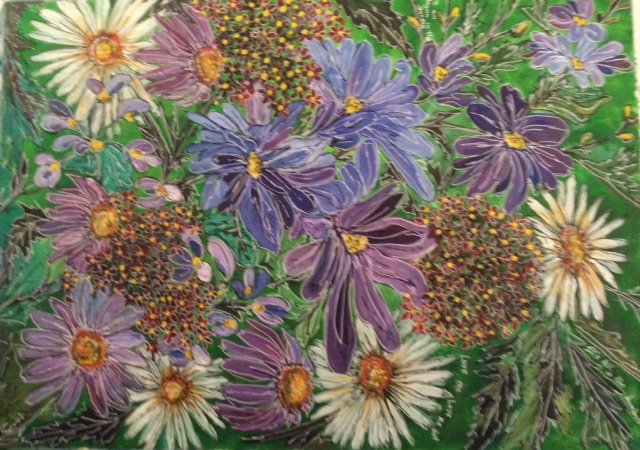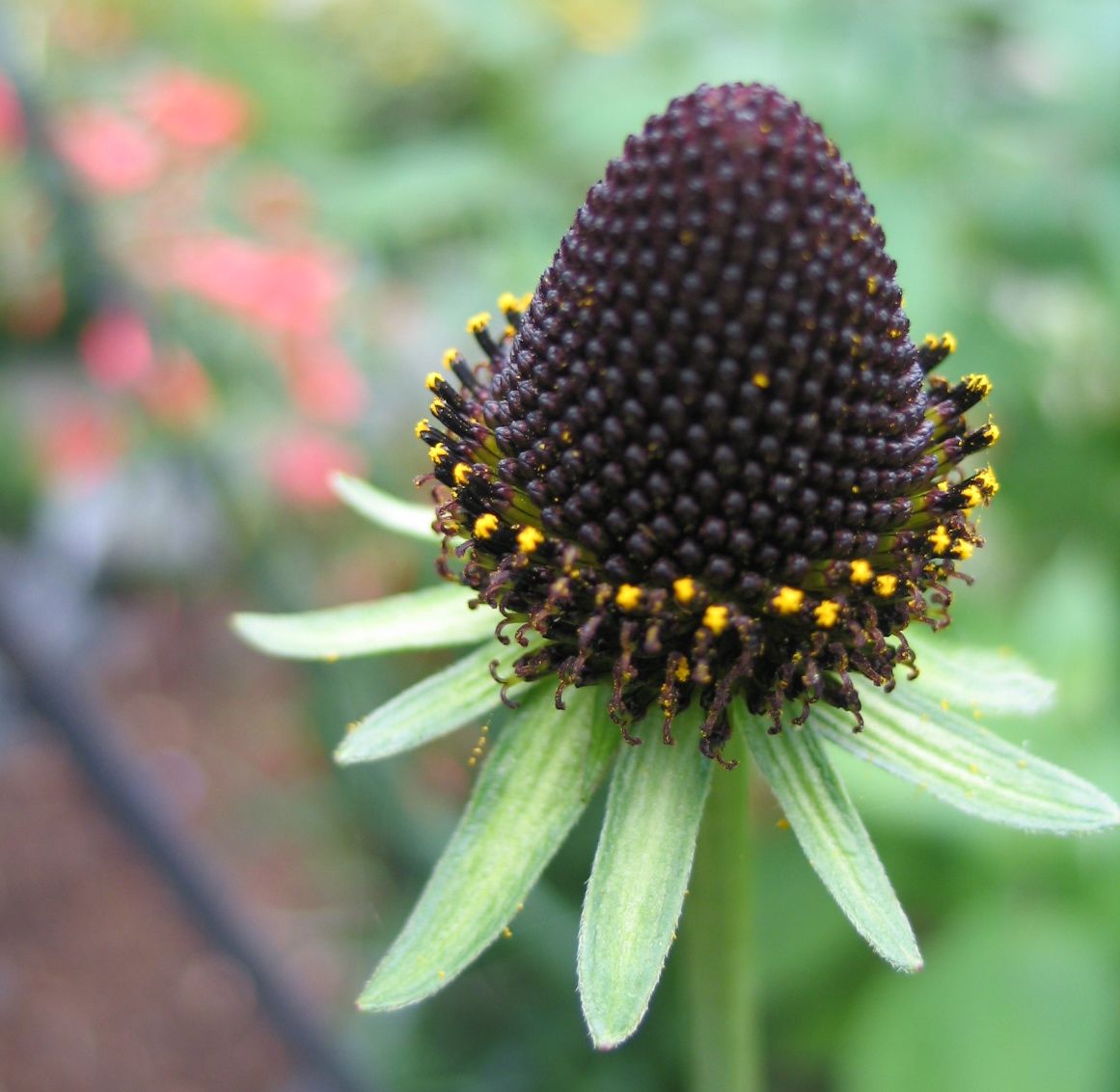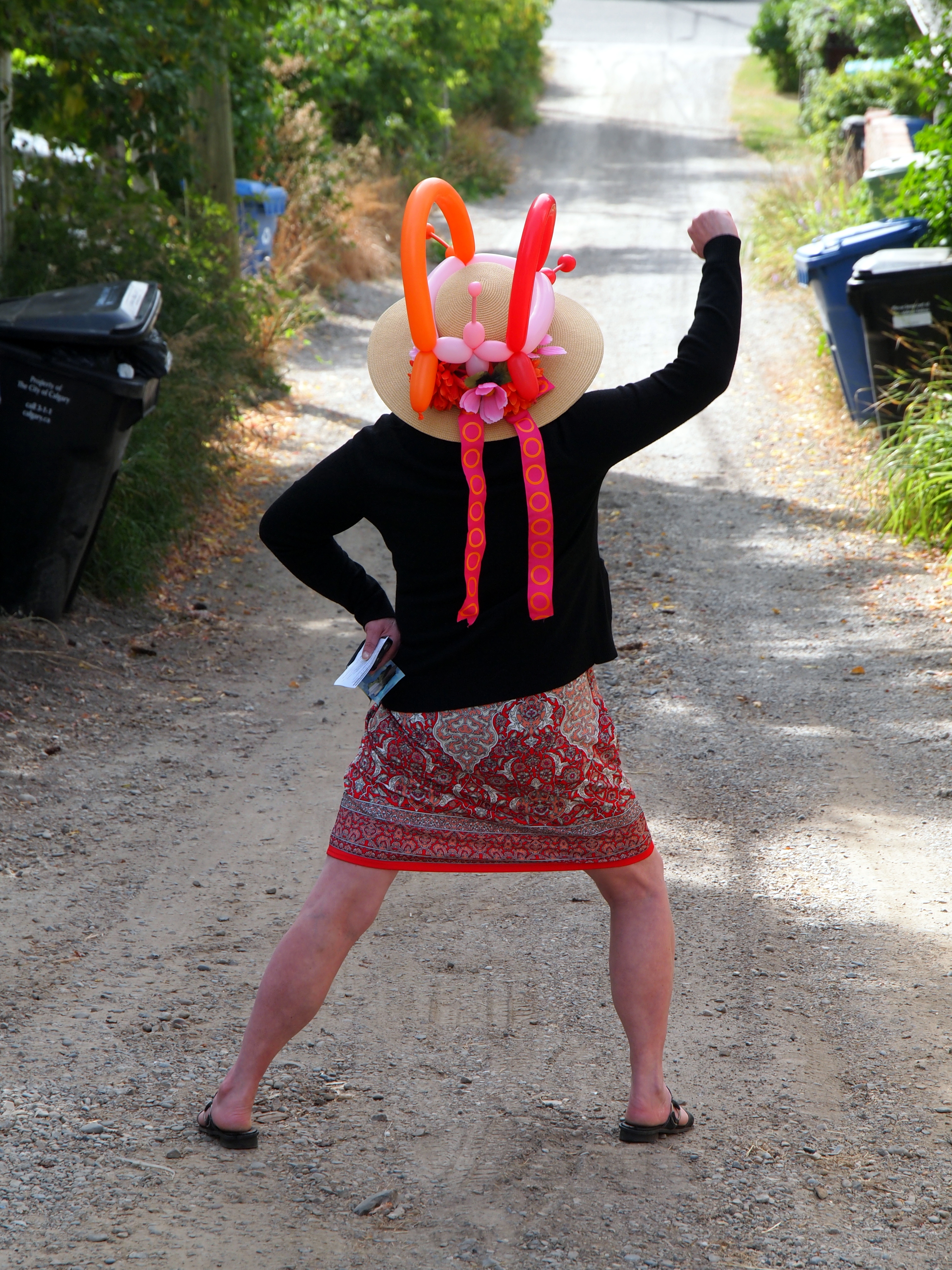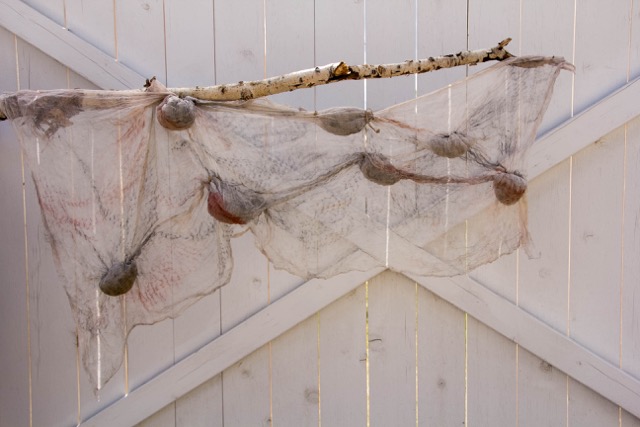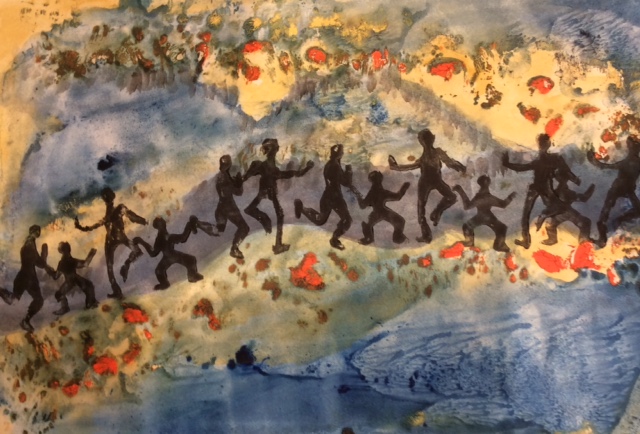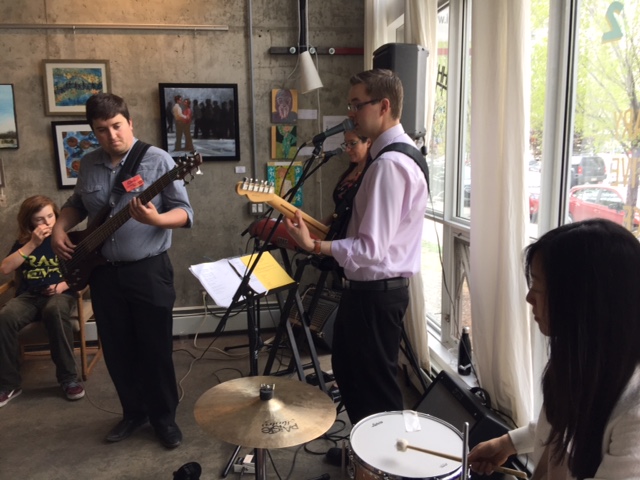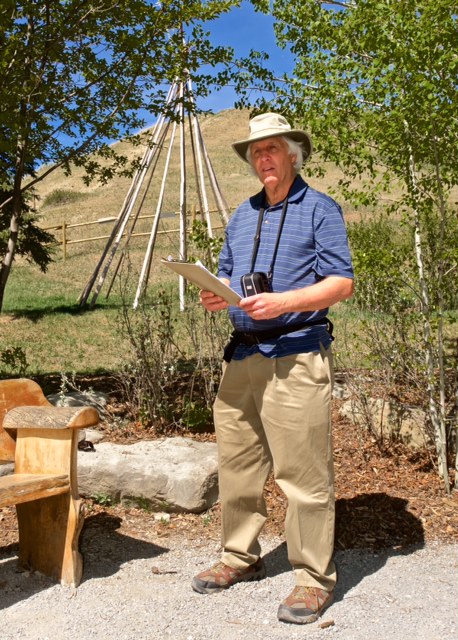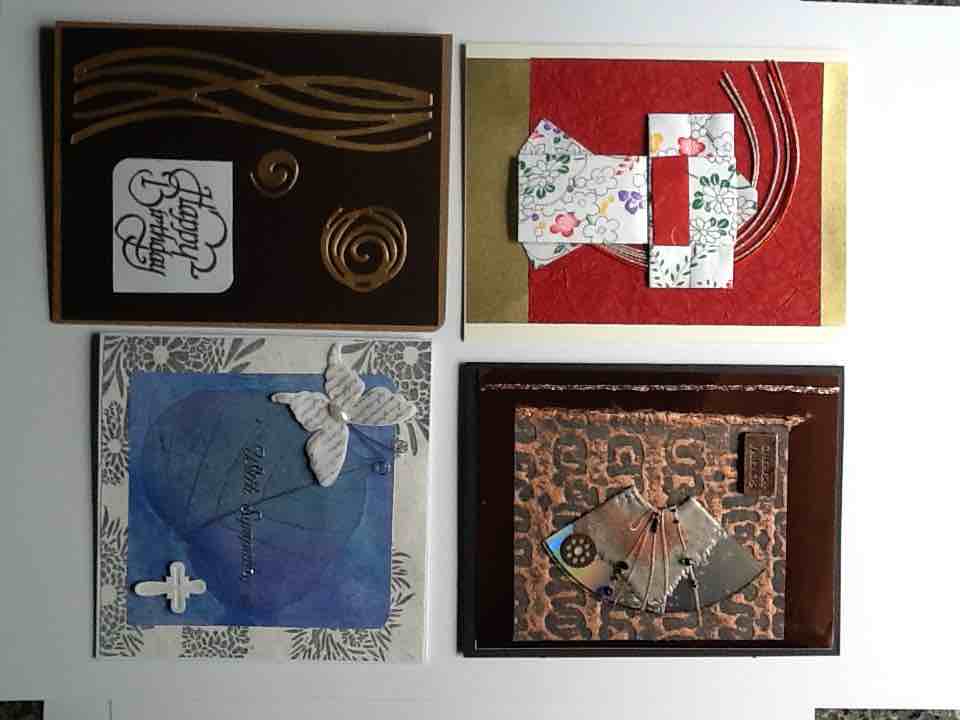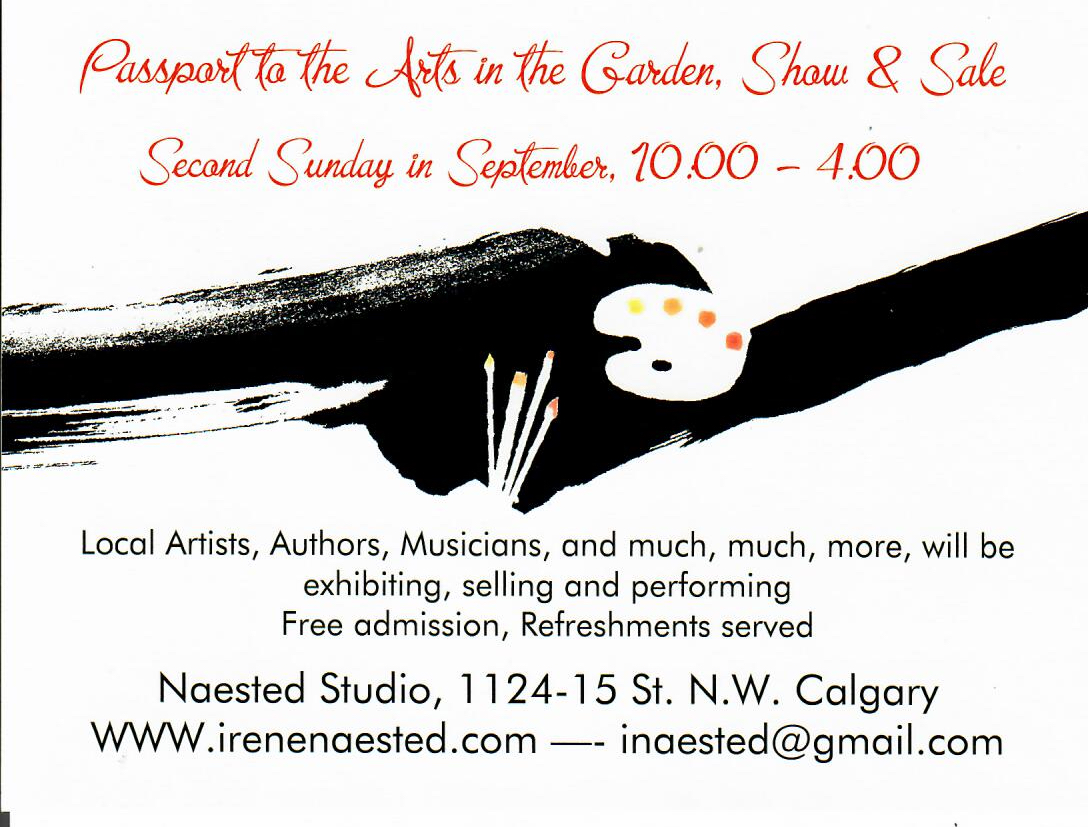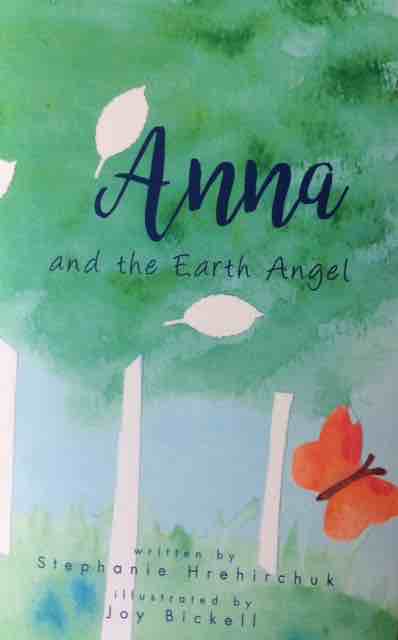The Naested Gardens:
An Introduction
In the Calgary Herald there was and article on “Deadheading keeps the Garden Alive”… one argument to support this practice is to avoid the “wild abandon” of an uncontrolled, riotous growth of a cottage garden. Well I am proud to say I have finally achieved this state in my inner city garden and it is a recognized distinct style. My garden wonderful and gives me great joy. Enjoy the Summer and join me in my garden and 25 + other artists, authors and musicians – “Passport to the Arts in the Garden Show and Sale, Sunday, September 8, 2019, 10:00 – 4:00, at the NAESTED STUDIO and garden. 1124-15th Street N. W.
Here is a Wikipedia definition of my garden for your information and enjoyment.
“The cottage garden is a distinct style that uses informal design, traditional materials, dense plantings, and a mixture of ornamental and edible plants. English in origin, it depends on grace and charm rather than grandeur and formal structure. Homely and functional gardens connected to working-class cottages go back centuries, but their stylized reinvention occurred in 1870s England, as a reaction to the more structured, rigorously maintained estate gardens with their formal designs and mass plantings of greenhouse annuals.”

Naested Garden: Irises
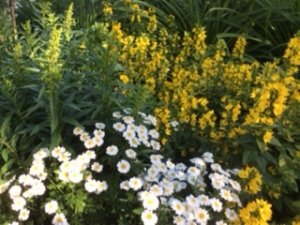
Naested Garden Flowers
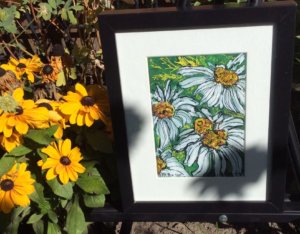
Painting By Irene Naested in flower garden at Art in the Garden Show and Sale
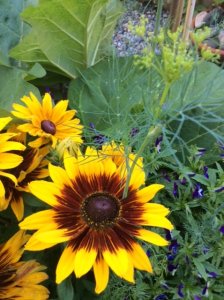
Naested Garden
All artists; visual artists, writers, story tellers, mythmakers, poets, musicians, dancers, song writers, throughout history have been inspired by the forms, shapes, patterns, colours, and beauty of the varied types of flora, plants, flowers, and trees found on earth. The formation of the various flora is believed to be depended on the four basic environmental elements of earth (soil type), air (wind patterns), water, (moisture from rain and snow), and fire (the sun). With these variable there appears to be an incredible order in the manner in which flora has developed. These can be interpreted through the lenses of geometry, science, visual arts, poetry, story telling, song, movement, storytellers, and mythmakers. Artists observe closely in order to understand, interpret and reinterpret, or communicate to others what they have seen, felt, and understood. Close observation leads to a much deeper appreciation of the observed object. “In order to really understand the natural world, one must integrate new observations with one’s previously understood concepts and assumptions. It is then that one can reinterpret, restate, and attempt to communicate this new understanding to other (visually, verbally, musically, kinesthetically, and mathematically).” (Jarvis & Naested, 2012, p. 57)
Sensuality of Flowers:
Flowers are not shy to display their sensuality through line, shape, pattern, texture and colour. The flower garden, organic splashes of colour, bold, beautiful and sensuous. Making a non-worded statement; “This is who I am. Come closer and you will comprehend. Come closer and smell my pungent sweetness or sour bitterness” (Naested). Many various artists painted flowers, among them are Klint and O’Keeffe who were captured by flowers essential power. In painting flowers the elements are observed, worshiped, and re-created.
Naested Gardens: Image Gallery

9 days till Passport to the Arts
Passport to the Arts - The 5th Annual Arts in the Garden Show and Sale - - - Please join us - - - Sunday, September 8, 2019 from 10:00-4:00 at Naested Studio and Garden - 1124- 15th Street N. W. Calgary. Visit Irene’s website for information on the artists, authors...
Todd Maduke will be performing at Passport to the Arts in the Garden, Show & Sale
Todd Maduke will be performing at Passport to the Arts in the Garden, Show & Sale, Sunday, September 8, 2019 from 2:00 - 4:00 at 1124-15th Street N.W. For more information please go to Irene's website: www.passporttothearts.ca Todd Maduke is a Calgary-based...
Cassandra Arnold, painter & author, will be at Passport to the Arts….
Cassandra Arnold, painter & poet, will be showing and selling her work at Passport to the Arts in the Garden, Sunday, September 8, 2019, from 10:00 - 4:00 at 1124-15th Street, N.W. Calgary. Cassandra Arnold is a retired physician and largely self taught artist....
Stephanie Hrehirchuck, author, will be returning to Passport to the Arts….
Stephanie Hrehirchuck, author of children's books, health and diet, wellness (please refer to her website for a complete list) will be returning to Passport to the Arts in the Garden Show & Sale, Sunday, September 8, 2019, from 10:00 - 4:00 at 1124 - 15th Street...
Krista and Jessica Anger will be returning to Passport to the Arts Show & Sale…
Krista and Jessica Anger will be returning to Passport to the Arts Show & Sale on Sunday, September 8, 2019 from 10:00 -4:00, at 1124-15th Street N. W. Calgary. Krista Anger, photographer, author and jeweller, works for the Calgary Public Library. The jewellery...
Connie Ptasinski will be turning for the fifth year to Passport to the Arts….
Connie Ptasinski will be returning for the fifth year to Passport to the Arts in the Garden Show and Sale, Sunday, September 8, 2019, at 1124-15th Street N.W. from 10:00 - 4:00 at 1124-15th Street N.W. Connie Ptasinski completed degrees from University of...
Tammy Watt, painter, will be returning to Passport to the Arts….
Tammy Watt, painter, will be returning to Passport to the Art in the Garden, Show & Sale, Sunday, September 8, 2019, from 10:00 t0 4:00 at 1124 - 15th Street N.W. Calgary. Tammy Watt works with acrylic paint and takes pleasure in the challenges of design...
Irene Naested will be showing and selling her work at Passport to the Arts in the Garden
Irene Naested will be showing and selling her work at Passport to the Arts in the Garden on Sunday, September 8, 2019 from 10:00 - 4:00 in her studio and garden at 1124 - 15th Street N.W. Irene is Professor Emerita from Mount Royal University. She is a visual artist,...
The Fragments will be returning to Passport to the Arts in the Garden
The Fragments will be returning to Passport to the Arts in the Garden Show & Sale, Sunday, September 8, 2019. They will be playing from 12:00 - 2:00 at 1124-15th Street N. W. The Fragments: David Martin, Innes Cheng, Chris Gaston, Natasha Sayer
David Peyto will be returning to “Passport to the Arts” in the Garden show & Sale
David Peyto will be returning to “Passport to the Arts” in the Garden Show and Sale on Sunday, September 8, 2019. 10:00 - 4:00, free admission, refreshments & prizes David is a self-published author of four Calgary walking guidebooks, three Calgary parks and green...
Jeweliyana Reece, Fused Glass, will be showing & selling her work at “Passport to the Arts”
Jeweliyana Reece, Fusion Glass, will be showing & selling her work at "Passport to the Arts" in the Garden Show & Sale, Sunday, September 8, 2019, from 10:00 - 4:00, at 1124-15th Street N.W. Calgary. Free admission, refreshments & prizes. Jeweliyana Reece...
Bob Pike will be showing & selling his work at “Passport to the Arts”
Bob Pike will be showing & selling his work at "Passport to the Arts" in the Garden Show & Sell. Bob Pike, Sculptor, attended the Alberts College of Art, and majored in sculpture. And became a full-time professional potter in 1972. He lived in Calgary,...
Connie Pike will be showing & selling her work at “Passport to the Arts”
Connie Pike will be showing & selling her work at "Passport to the Arts" in the Garden Show & Sale, Sunday, September 8, 2019, 10:00 - 4:00. at 1124- 15th Street N. W. Connie Pike’s medium is High Fire Clay-Porcelain and Stoneware. Her key theme is functional...
Valerie Walker will be returning to Passport to the Arts in the Garden Show & Sale
Valerie Walker is a self-published author of "TheAdventures of Hedley the Hedgehog" series as well as two juvenile time-travel novels, "Mystery in the Attic", and "The Quest for Kananaskis”. Her latest book "Looks Can Kill"is an adult/Young adult adventure thriller...
Beth Everest is returning to Passport to the Arts in the Garden Show & Sale, 2019
Beth Everest is returning to Passport to the Arts in the Garden Show & Sale, Sunday, September 8, 2019, from 10:00 - 4:00 Beth Everest, is a writer and jeweller artist based in Calgary. Her silver work has appeared in galleries such as The Red Door and The...
Alisha Alibhai will be returning to Passport to the Arts, Sept. 8, 2019
Alishia M. Alibhai (Young Living Essential Oils vendor table). Alishia has been using essential oils for the past 8 years both in her private practice and her personal life. She has a Ph.D. in Psychology, practices and teaches Reiki energy healing, is a Soul Coaching...
Josephine LoRe will be showing, selling & reading her poetry at Passport to the Arts
Josephine LoRe will be showing, selling and reading her poetry at "Passport to the Arts in the Garden", Sunday, September 8, 2019. Josephine LoRe … a pearl in this diamond world Josephine LoRe’s words have been read on the stage, published locally and internationally...
Sharon London, Card maker will be returning to Passport to the Arts in the Garden Show & Sale
Sharon London, card maker, has always loved Japanese paper and spotting an origami kimono in a paper art shop started her hobby as a paper artist. Moving from Japanese inspired cards to mixed media has been a fun journey. Inspiration and knowledge come from working...
Joanne Morcom returns to Passport to the Arts in the Garden Show & Sale, Sunday, Sept. 8, 2019
Joanne Morcom will be returning to Passport to the Arts in the Garden Show & Sale, Sunday, September 8, 2019. from 10:00 - 4:00. at 1124 - 15th Street N. W. Joanne Morcom is a writer and social worker who has four poetry collections to her credit. Her poetry also...
Cottage Garden in the Inner City – a Distinct Style
In the Calgary Herald in July there was and article on “Deadheading keeps the Garden Alive”... one argument to support this practice is to avoid the “wild abandon” of an uncontrolled, riotous growth of a cottage garden. Well I am proud to say I have finally achieved...
Donna Russell will be returning to “Passport to the Arts in the Garden Show & Sale” – Sunday, September 8, 2019
Passport to the Arts in the Garden Show & Sale Sunday, September 08, 2019, 10:00 – 4:00 Naested Studio and Gardens 1124 – 15thStreet N.W. Free Admission and Refreshments www.passporttothearts.ca Twenty-four Calgary artists and authors...
Gordon Pengilly, Sculptor at “Passport to the Arts in the Garden Show & Sale”
Gordon Pengilly, Sculptor will be showing and selling his work at Passport to the Arts in the Garden Show and Sale, Sunday, September 8, 10:00 - 4:00, 2019, at 1124 - 15 Street N. W. Calgary, T2N-2B4 Calgary artist Gordon Pengilly is a self-taught sculptor. He has...
An invitation to – Passport to the Arts in the Garden Show & Sale, 2019
Sunday, September 8, 2019 – 10:00 – 4:00 Good day, we are hosting the fifth annual Passport to the Arts in the Garden Show & Sale, to be held on Sunday, September 8, 2019 from 10:00-4:00 at Naested Studio and Garden, 1124- 15th Street N. W. Calgary. There...
Return of “The Fragments” at Passport to the Arts Show & Sale, 2019
"The Fragments" will be performing at Passport to the Arts in the Garden Show and Sale Naested Studio, 1124-15th Street N. W. Calgary Sunday, September 8, 2019, from 12:00 - 2:00 (www.thefragments.ca) with Innes Cheng, Chris Gaston, David Martin, and Natasha Sayer,...
The Fragments Reinterpreted: Music & Visual Art
The Fragments Reinterpreted: Music & Visual Art from C.D. "Winter Wasp", 2019 Irene Naested "Winter Wasp", Mixed Media, Mono & stamp print and ink. ...
Ten Visual Artists reinterpret the Fragments new C.D.
To visit the Fragments Website click here This past winter ten visual artists had the opportunity to work with the Calgary musical group The Fragments to reinterpret thirteen songs from their recently released C.D. "Winter Wasp". The Calgary Herald, April 17th, 2019...
Beth Everest Show and Sale at the Passport to the Arts, September 9, 2018
Beth Everest, is a writer and jeweller artist based in Calgary. Her silver work has appeared in galleries such as The Red Door and The Rubaiyat. Her book of poems, Silent Sister: the mastectomy poems, (2016) Frontenac House Press has received much recognition. Beth...
Art in the Garden – Stephanie Hrehirchuk, Author
Stephanie Hrehirchuk, Children's Book Author, lives in Calgary where she reads with her daughter, learns how to use technology from her son, plays gin rummy with her husband, and writes about the world outside her door and inside her imagination. Anna and the Earth...

